Mughal Emperor Babur, born on February 14, 1483, and died on December 26, 1530, was the originator of the Mughal Empire in the Indian Subcontinent. Babur’s inborn Mirza Zahir Ud din Muhammad was a successor of Genghis Khan and Timur through his mother and father, respectively. His posthumous name was given Firdaws Makani which is (Dwelling in Paradise). Babur was the first-born son of Umar Sheikh Mirza (Fergana’s Governor from 1469 to 1494) and a great-grandson of Timur. Babur conquered the throne of Fergana in its Capital Akhsikent in 1494 at the youth of twelve and faced rebellion. He was of noble blood himself on his father’s side. He is known as Timurid, a personalized Turk degenerate from Timur the lame. And of his mother’s side, he was a successor of Genghis khan.
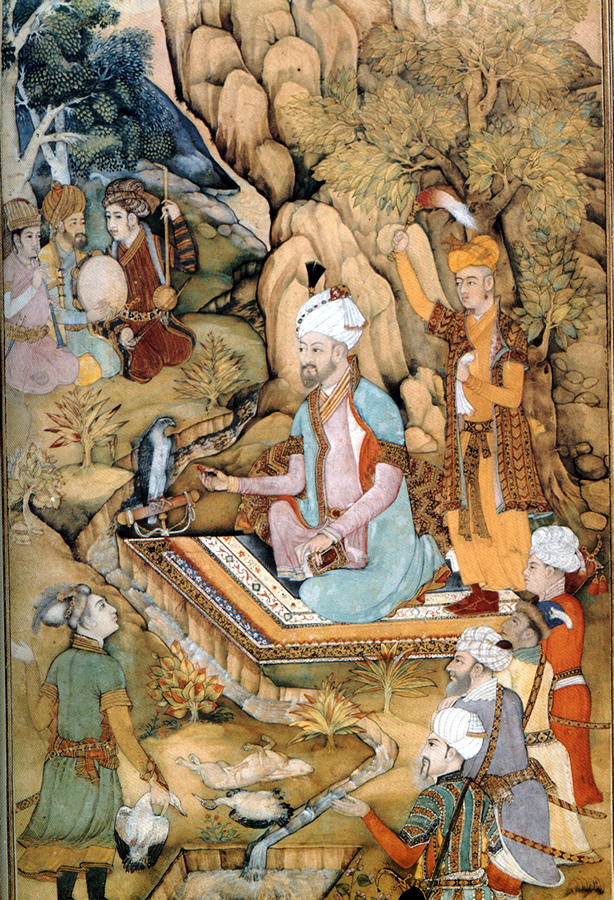
Zahir ud din Babur whose nickname is Babur or lion, was birth in a Timurid royal family in Andijan, now Uzbekistan. By the hour of the Mughals birth, the remaining Mongol successor in Western Central Asia had mixed marriage with Turkish and Persian peoples and comprehended the local culture. They are strongly affected by Persia’s used of Farsi as their official court language, and they have adopted Islam. Most oblige the Mystic Sufism-Infused style of Sunni Islam.
Royal Birthplace and his Possess Family
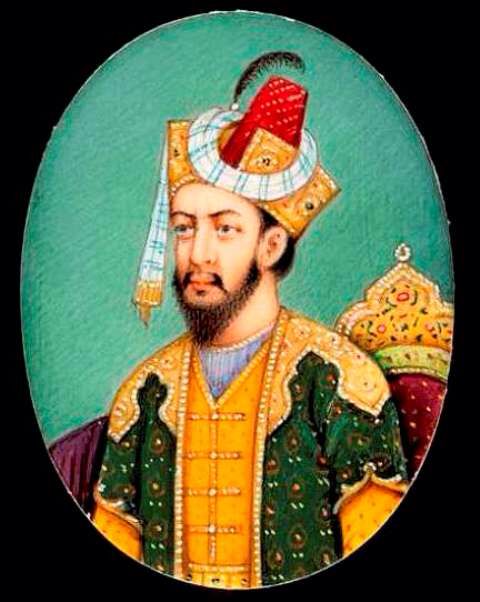
Babur arrived from the Barlas tribe of Mongol origin. But confined members of the tribe think of themselves Turks in language and tradition through long residence in Turkish regions. Thus Babur, called a Mughal, pulled most of the support from the Turks. And the empire that he founded was Turkish in character. His family become a member of the Chagatai society by which title they are known as. He was fifth in sequence from Timur and in the female line through 13th from Genghis khan. Umar Shaykh Mirza, father of Babur, govern the small county of Fergana to the north of the Hindu Kush mountain range. Among the Turks, there was no fixed law of succession.
Every king of Timurids considered his right to rule the total of Timur’s supremacy. Those regions were vast, and thus the Princes protests led to unending wars. The Timurid Princes think of themselves as Kings by profession. Their work was to rule others without seeing too precisely whether any particular area had naturally formed a part of Timur’s Empire. Babur’s father, honestly to that tradition, spent his whole life trying to recover Timur’s old Capital of Samarkand, which is now in Uzbekistan. Thus Babur followed his footprints.
Family Scenario Of Mughal Emperor Babur
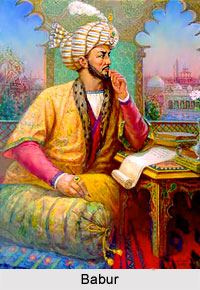
Babur’s record form the primary source of information about his life. It is known as Babur Nama and written in Chagatai Turkic, his mother tongue. During the rule of Babur’s grandson, Akbar Babur Nama translated into Persian. Babur was born on February 14 1483, in the town of Andijan of Fergana valley, currently Uzbekistan. He was the first born child of Umar Sheikh Mirza. Umar Sheikh was the ruler of Fergana valley. Babur was the son of Abu Sa Id Mirza and also the grandson of Miran Shah, who was himself a lad of Timur. Babur’s wife, name Qutlugh Nigar Khanum who, was the daughter of Yunus khan, the chief of Moghulistan. Babur is renowned for the Barlas tribe.
Why Babur Proceed to India and when?
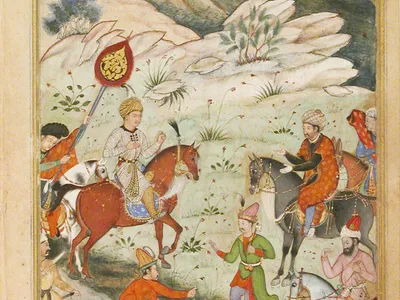
Babur wanted to get away from Uzbeks. He chose India as protection instead of Badakhshan, North of Kabul. His third loss to Samarkand offer his full attention to North India. He launched a campaign and reached the Chenab river which is in Pakistan now. He aimed to expand the rule to Punjab until 1524. The main motive was to fulfil the legacy of his ancestor Timur though it is used to be a part of his empire.
At the temporary of North India was part of the Delhi sultanate governed by Ibrahim Lodi of the Lodi Dynasty. Still, the Sultanate was falling into pieces, with many betrayers. Babur accepted an invitation from Daulat Khan Lodi who was the Governor of Punjab, and Ala Ud Din, uncle of Ibrahim. He sent an envoy to Ibrahim, claiming himself the perfect heir to the throne. But the envoy delayed at Lahore, Punjab and later released in months.
He started for Lahore in 1524 and observe that Daulat khan Lodi dissolved by forces, sent by Ibrahim Lodi. When Babur came to Lahore, Lodi army was abandoned, and his army was scattered. To that, Babur fired Lahore for two days and marched to Dibalpur. He placed Alam khan as governor.
His battles to secure his position
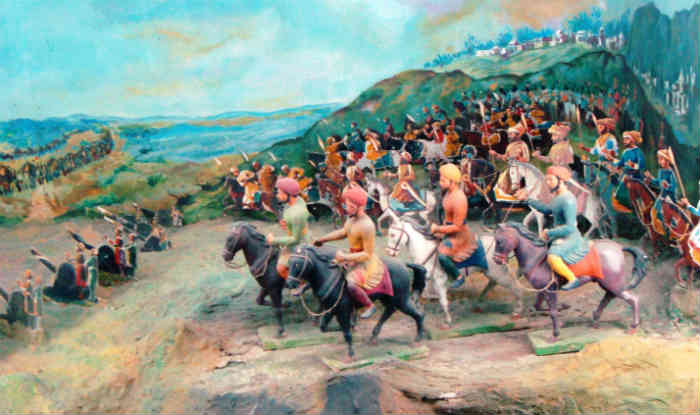
After five years of earlier invitations to the subcontinent, Babur finally set in motion an all-out assault on the Delhi sultanate and Ibrahim Lodi in April 1526. On the grassland of Punjab, 24,000 of Babur’s army, mainly cavalry, withstand sultan Ibrahim who has 1000 war elephants and 100,000 mens. Although Babur seems to be exceeds because of the thing which he had and Lodhi don’t- guns. The battle that came after was the First Battle of Panipat (1526), marking the fall of the Delhi Sultanate. With advanced firepower and tactics, Babur thrashed Lodi’s army. He killed the sultan and 20,000 of his men. Lodi’s fall flagged the start of Mughal empire in India.
Mughal Emperor Babur: Battle of Khanwa
The Khanwa battle fought between Rajput, Ruler of Mewar (Rana Sanga) and Babur on March 16, 1527. Rana Sanga (Rajput Ruler) wants to bring down Mughal Emperor Babur, who he considers a foreigner is ruling in India. They also wanted to expand the Rajput territories by taking over Delhi and Agra. Afghan Chiefs supported him. After receiving the news of Rana Sanga’s extension towards Agra, Babur took a preventive position in Khanwa, where he decided to set a counterattack later. Babur won the battle because of modern tactics and ‘Superior Generalship’ and the battle featured canons and muskets first in India, according to K V Krishna Rao.
Battle of Chanderi
A year after the Battle of khanwa, Battle of Chanderi took place. After receiving the news Rajput ruler decided to renew the conflict with him. Babur decided to quarantine the Rana by defeating one of his loyal allies Medini Rai, ruler of Malwa.
Overreaching Chanderi on January 20, 1528, Babur provided Shamsabad to Medini Rao in the interchange of Chanderi as a peace opening. But the offer got rejected. The outer fort taken by the armies of Babur at night. The very next morning, the upper fort also taken. Observing no chance of victory, Medini Rai arranged a Jauhar during which children and women sacrifice themselves within the fort. A small group of soldiers also collected in Medini Rao’s house and murdered each other in collective suicide.
Battle of Ghaghra
The Battle of Ghaghra (May 6, 1529) was fought between Mughal Emperor Babur and Mahmud Lodhi at Ghaghra river, near Chhapra, Bihar. The Mughals emerged victorious in this battle. Babur was assisted by his commanders like Humayun and Askari Mirza meanwhile Sultan Mahmud Lodhi was assisted by Sultan Nusrat Shah and Sher Shah Suri. Sultan Mahmud Lodhi was eager to capture Delhi Sultanate by Western Afghan Confederates and aided by Rajput Confederates.
How did Mughal Emperor Babur Reign India?
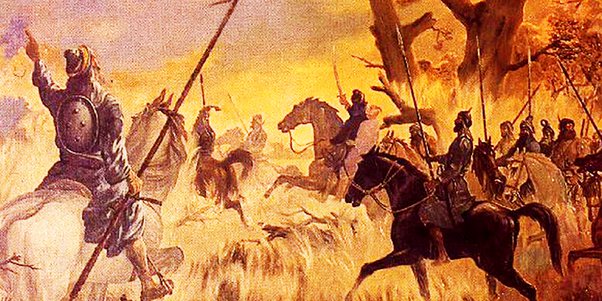
Launching out in November 1525 Babur met Ibrahim at Panipat, which is 50 miles North of Delhi, on April 21, 1526. His army no more than 12000, but they acquire skillful followers expert in cavalry tactics and help out by new artillery acquired from the Ottoman Turks. Ibrahim’s army consists 100,000 with 100 elephants, but its tactics was out of date. Mughal Emperor Babur won the battle, and Ibrahim was killed in that battle. Babur occupied Delhi and reached Agra on May 4. His first aim, to lay out a garden which is now known as Ram Bagh, by the Yamuna river.
Babur’s first problem was his force suffering from disheartening and heat, wanting to go back home as Timur had done. Babur reroutes them by handling reproaches, threats, appeals and promises, which is vividly tell of in his memoirs. He dealt with Rana Sanga. Babur then dealt with defiant Afghan to the east who captured Lucknow while he was dealing with Rana Sanga. Other Afghans regrouped with Sultan Ibrahim’s brother Mahmud Lodi who had captured Bihar. There were also Rajput chiefs still disobeying him, mainly the ruler of Chanderi. In 1528 after capturing the fort, Babur rotated to the east. Crossing the Ganges, he drove the Afghan guards of Lucknow into Bengal. He then move to Mahmud Lodi, whose army got dissolves in the third great victory of Babur that of Ghaghara. The artillery again critically helped by handling the boats skillfully.
READ ALSO: Mughal Emperor Akbar
How does he affect the Princely State Graph?
The South Asian Subcontinent, modern India, Sri Lanka, Afghanistan, Pakistan and Bangladesh, is part of the Eurasian landmass. It has a long history of small states and big empires. In 1750 it got govern by a loose alliance of princely states and prosperous port cities. Once upon a time, the fearsome Mughal Empire ruled the subcontinent. But the control carried by the Mughals had started to change for two reasons. One internal separation led to enemy groups challenging the central government of the falling empire. Second, governments and merchants began looking for ways to get some of the empire’s wealth.
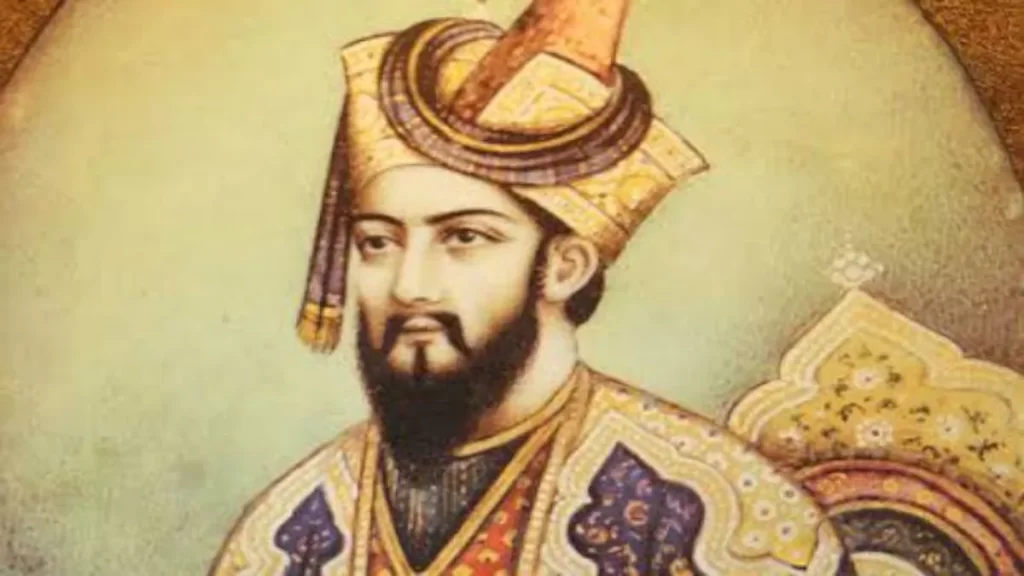
His family tree
- Timur – Emir of Timurid Empire1370-1405
- Prince Miran Shah
- Prince Sultan Mohammad
- Sultan Abu Sa Id
- Prince Umar Sheikh Mirza
- Babur- Founder of the Mughal dynasty of India
Consorts
- Aisha Sultan Begum- First wife of Babur
- Zainab Sultan Begum
- Masuma sultan begum
- Bibi Mubarika
- Gulrukh Begum
- Dildar Begum
- Gulnar Aghacha
- Nargul Aghacha
READ ALSO: Sardar Vallabh Bhai Patel


👌
सभी तथ्य एक जगह पर भी लिखों जिससे छात्र आसानी से पढ़ और याद कर सकें ।